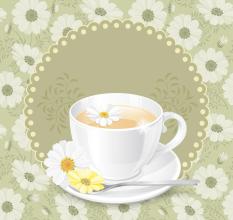Introduction of coffee utensils
Turkish coffee pot: popular among the people in the Middle East in the early 19th century, people call it "Evelick". It is about six inches tall and has a capacity of about three to four people. it has a long handle, mostly made of pure copper or brass, and a few are internally tinned. Naples turnpot: in the mid-19th century (circa 1860), the French invented a relatively simple "filter coffee maker", which was not widely used in Italy until 1950. The Italians called it the "Naples turnpot". It consists of two round cylindrical pots, one stacked on top of the other, one with a spout and a filter box with holes in the middle. Vienna coffee pot: at the end of the 19th century, the "Vienna coffee pot" (also known as the "Belgian coffee pot") was invented by using the vacuum principle, that is, the coffee powder and water were boiled with an alcohol lamp, and the hot gas produced pressure after boiling. The coffee powder mixture flows into the glass container through the vacuum tube connecting the two containers. Finally, the brewer is removed from the alcohol lamp, and the coffee liquid is extracted from the brewer by vacuum principle, and the gate is opened when drinking. Put it in a cup and enjoy it. Filter: a simple "filter" appeared in the early 20th century, using the stamping principle, just like the tea filter used in making tea, the coffee powder was placed at the bottom of the apparatus by a spindle and a very fine mesh, plus slightly cooled boiling water. Punch back and forth for about five minutes, and the coffee liquid will be drawn out. Glass vacuum pot: as early as 1840, Scottish naval engineer Robert Napier invented the prototype of the siphon coffee maker. It is made of two spherical glass containers. The ground coffee powder is placed on the upper layer, and the lower layer is used to hold hot water. The lower container is burned with an alcohol lamp to produce vapor pressure, and the water rises through the vacuum tube between the two containers to mix with the coffee powder in the upper container. Remove the fire a few minutes later, and the lower layer has the effect of siphoning due to a drop in temperature, so the coffee liquid is pumped into the lower container. The middle and late 20th century-now coffee has become an indispensable drink in the daily life of the public, this period is the heyday of the development of coffee pots, the emergence of a large number of inventions, electric coffee machine also entered our line of sight at this time. Filter kettles: in the mid-20th century, filter pots were popular in restaurants (especially in France) and ships. The structure is simple, a small cylindrical mug-shaped metal container with a small hole at the bottom for coffee to filter into the container, with a flat and very fine strainer. Filter paper drip: Ms. Melitta Bentz in Germany invented the filter paper drip, which also uses filter drip, but it is more in line with the concept of environmental protection and health awareness of modern people. There are two types of filter paper dripping devices on the market: one hole at the bottom and three holes at the bottom. Electric coffee maker: there are three forms of electric coffee maker: percolation type, drip type and vacuum type. Percolation is an early product, low price but inconvenient to use, poor reliability; vacuum brewing coffee has a strong flavor, but is prone to failure. In 1965, Philips invented the first drip coffee maker, and its performance was widely recognized. History entered the era of drip electric coffee maker dominating the world. The drip type electric coffee maker includes an ordinary coffee maker used only to make coffee powder, a two-in-one coffee machine that can grind coffee beans on its own, and an Italian steam coffee maker that can make milk bubbles.

Important Notice :
前街咖啡 FrontStreet Coffee has moved to new addredd:
FrontStreet Coffee Address: 315,Donghua East Road,GuangZhou
Tel:020 38364473
- Prev

Coffee Bean Freshness Identification and Preservation Methods
Smell: Fresh coffee beans smell strong, otherwise tasteless or bad smell. See: Good coffee beans are complete in shape and full in size. Otherwise, the shape is incomplete. Pressed: Fresh coffee beans are crispy when pressed, and the aroma wafts out when cracked. Color: dark with black coffee beans, boiled coffee has a bitter taste. Yellower colored coffee beans, brewed coffee with sour taste. good
- Next

The Origin of carbonized Coffee
The origin of charcoal-roasted coffee is in Japan, which means that the fire source of roasted coffee is carbon fire, and sometimes special wood is used as fuel, because coffee beans roasted with carbon fire have wood flavor rather than carbon smell. Because the coffee beans are roasted with wood, in order to retain the woody flavor, the coffee beans should not be roasted too deep. So, stop baking like charcoal.
Related
- Does Rose Summer choose Blue, Green or Red? Detailed explanation of Rose Summer Coffee plots and Classification in Panamanian Jade Manor
- What is the difference between the origin, producing area, processing plant, cooperative and manor of coffee beans?
- How fine does the espresso powder fit? how to grind the espresso?
- Sca coffee roasting degree color card coffee roasting degree 8 roasting color values what do you mean?
- The practice of lattes: how to make lattes at home
- Introduction to Indonesian Fine Coffee beans-- Java Coffee producing area of Indonesian Arabica Coffee
- How much will the flavor of light and medium roasted rose summer be expressed? What baking level is rose summer suitable for?
- Introduction to the characteristics of washing, sun-drying or wet-planing coffee commonly used in Mantenin, Indonesia
- Price characteristics of Arabica Coffee Bean Starbucks introduction to Manning Coffee Bean Taste producing area Variety Manor
- What is the authentic Yega flavor? What are the flavor characteristics of the really excellent Yejasuffi coffee beans?

